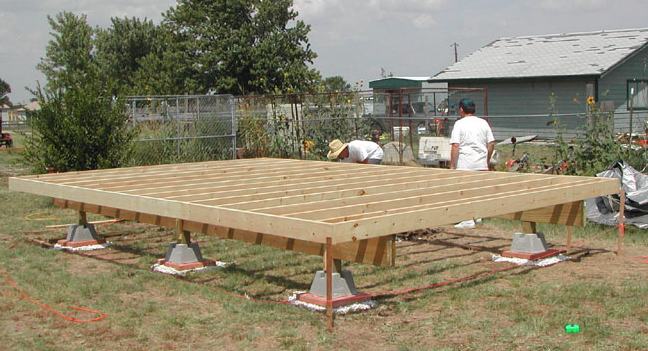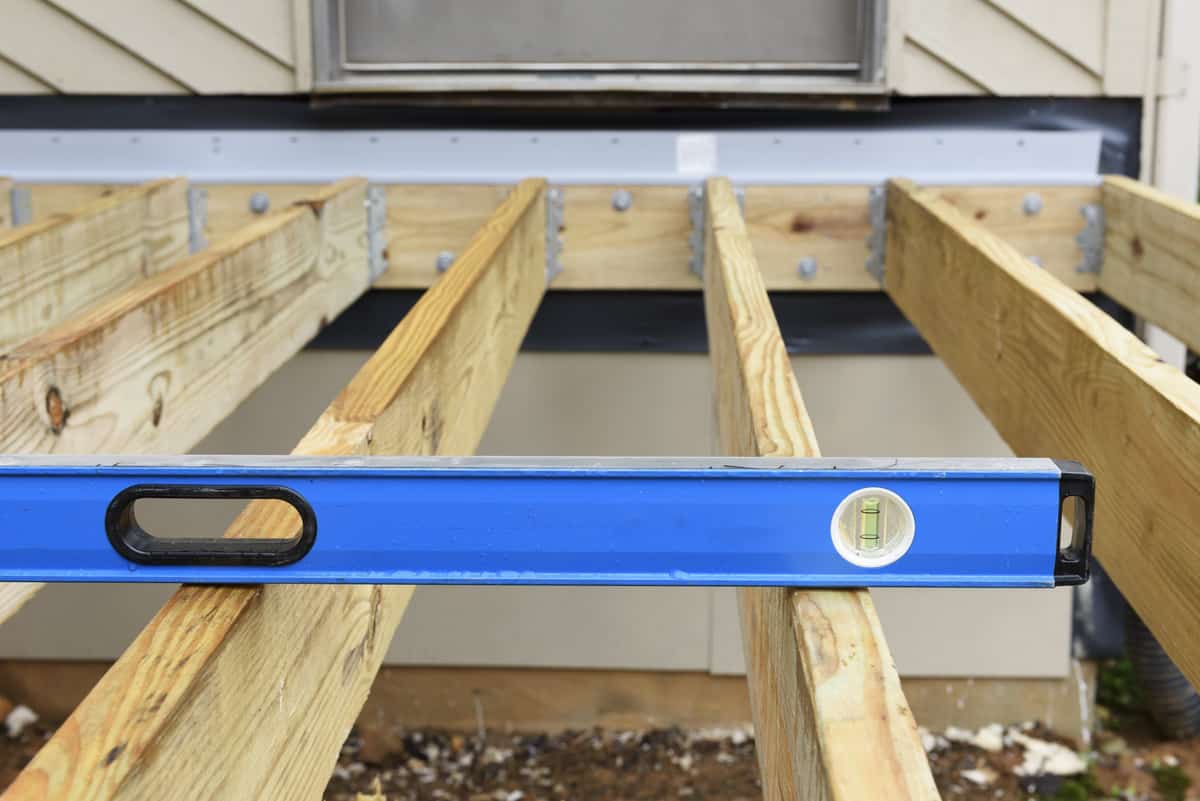


One can of this expanding foam is equal to 8 tubes of regular construction adhesive! TIP:We used DAP Subfloor Construction Adhesive whenever we needed to build our beams or put down subfloor.
#Floating foundation post failure under deck full
To fashion the beams we over lapped the 2×8’s making sure to use construction adhesive and nails the full length of the beam. We used 16ft long 2×8’s to make up the three main beams that will support the floor joist. These are the Shaw Brick 24″ x 24″ patio slab pavers we used. Here’s a panoramic view of our build site. TIP:You can fill the cinder block with expanding foam to help keep water/snow from filling them up and freezing in the winter.

Laying out some lumber scabs to ensure the pads are all the same height.īelow we initially used 4 cinder blocks on each pad (2 on top of 2) but we found that was a little too high to our liking. It’s great when the whole family comes out to lend a hand. Getting the ground perfectly level is critical in ensuring the remainder of the structure is level, won’t shift, and allows for every beam, board and joist to line up perfectly.īelow my wife is leveling out the ground. Leveling the ground with All-Purpose-Sand (AKA Crusher Dust) We did this using 2 bags of Quikrete All-Purpose-Sand for each of the locations where we’ll be placing the 8 24″ X 24″ patio slab paver pads and 3 precast 4-way concrete post footings for the 3 deck posts. We leveled out the 12 locations, on undisturbed soil, where we’ll be placing the above ground footings. When built properly, your cabins foundation should easily last the life of the cabin and most importantly provide a plumb, level and solid building foundation. This provides an excellent thermal break from the cold harsh winters of Nova Scotia and creates a strong and rigid building platform. We will sandwich 1″ think rigid formula extruded polystyrene insulation between 3/4″ OSB. TIP: Our floor design might seem unique but it is a proven building technique for cold environment s like ours. Our foundation was simple to design and quick to build. Heavy machinery is expensive to bring in and the soil type may not always conducive to you building a fully dug out basement.Ī poured foundation, or even a cement pad, can cost thousands and take weeks to build.Īgain, a cement truck may not even be able to access your build site.


 0 kommentar(er)
0 kommentar(er)
